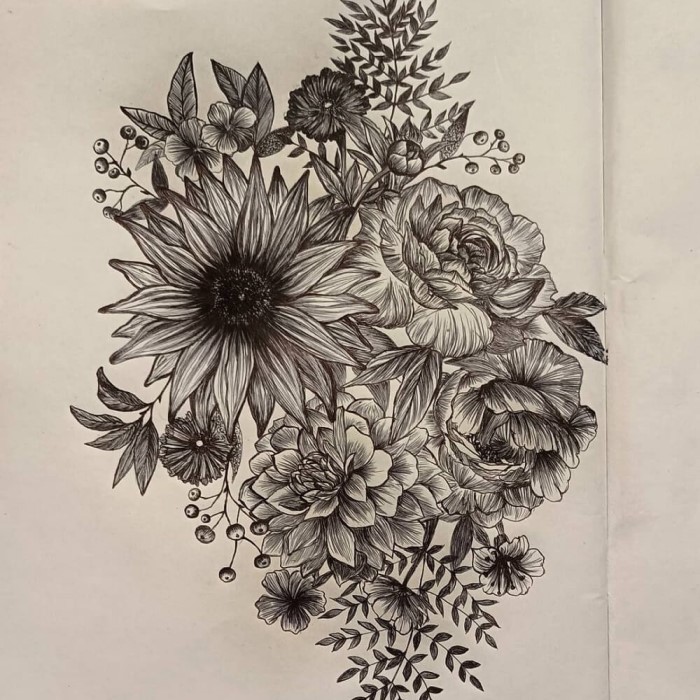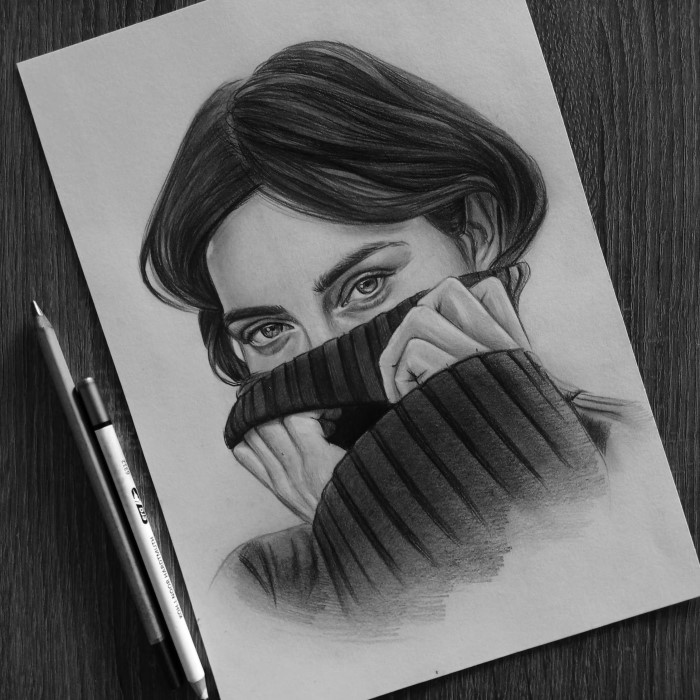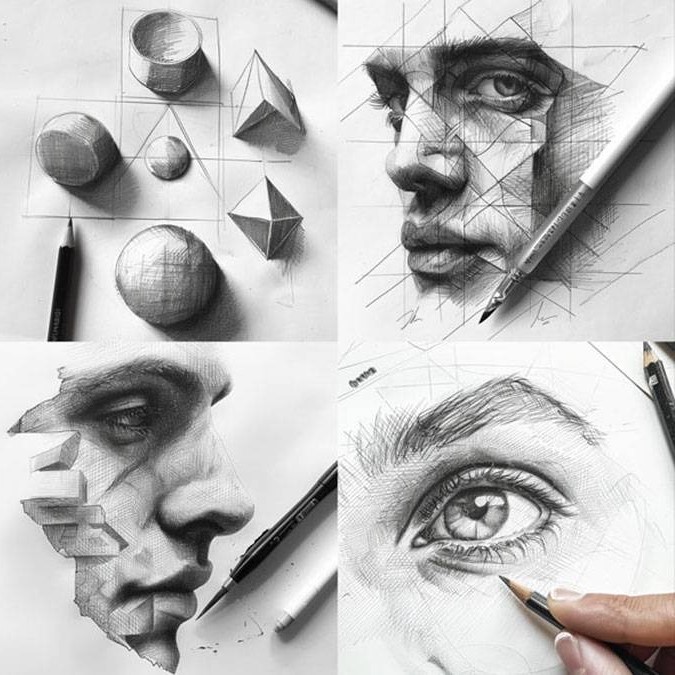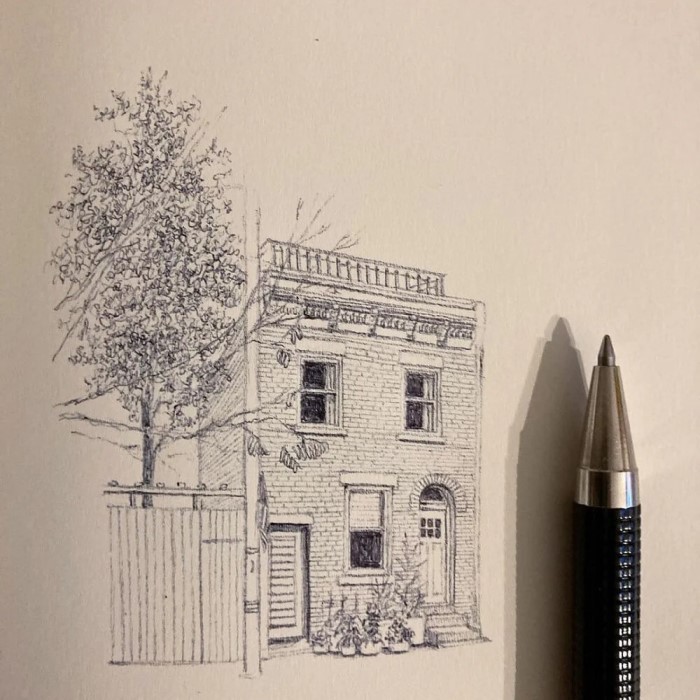Introduction: The Joy of Pencil Drawing
Pencil drawing can be an incredibly fulfilling and therapeutic artistic endeavor. With just a simple pencil and paper, you can create unique pieces of art that reflect your creativity and imagination. If you’re searching for pencil drawing ideas, you’re in the right place! This article will explore several creative pencil drawing ideas that you can try this weekend, regardless of your skill level.
Whether you’re a beginner wanting to improve your skills or an experienced artist seeking fresh inspiration, there is something for everyone. You’ll find a variety of themes, techniques, and tips designed to elevate your pencil artwork and spark your creativity.

Exploring Unique Themes and Subjects
If you want to elevate your pencil drawings, exploring creative themes can make a big difference. By challenging yourself with varied subjects, you can broaden your skills and find new artistic inspiration.
Nature-Inspired Drawings
Nature-themed drawings are timeless and captivating. You can sketch forests, mountains, or oceans. Experiment with trees, flowers, and animals for detailed designs. Focus on textures like bark, water ripples, or leaf veins. This theme is ideal for developing observation and shading techniques.
Portraits and Character Sketches
Portraits are a classic and rewarding pencil drawing challenge. Practice capturing facial expressions and unique details. Include hair textures, clothing, and personal features to add depth. Character sketches allow you to incorporate imaginative elements, like costumes or fantasy personas.
Abstract and Geometric Designs
Abstract art uses shapes, patterns, and forms to create visually striking imagery. Geometric designs can include intricate patterns and symmetry. Play with angles, curves, and overlapping lines to make your drawings stand out. This theme often encourages precision and creativity.
Fantasy and Mythical Concepts
Fantasy themes are perfect for unlocking creativity. Draw mythical creatures, enchanted landscapes, or magical artifacts. These subjects allow for freedom to invent details and narratives. From dragons to fairies, each idea lets your imagination take center stage.
Techniques to Enhance Pencil Drawings
Improving your pencil drawings involves mastering essential techniques. These approaches can bring your artwork to life and make it more expressive. Let’s explore how shading, pencil grades, and light manipulation can elevate your skills.
Shading and Blending Approaches
Shading creates dimension and depth using gradation. Start by identifying a light source. Use techniques like hatching and cross-hatching for texture. Try blending tools like tortillons or tissue for smoother transitions. Practicing tonal ranges enhances your control over shadows and highlights.
Using Different Pencil Grades
Pencils come in various grades from soft (e.g., 6B) to hard (e.g., 4H). Softer pencils create darker, richer tones. Harder pencils are great for light details and crisp lines. Combine grades to achieve dynamic contrasts. Experimenting with multiple grades refines precision and shading versatility.
Adding Depth with Light and Shadow
Light and shadow make drawings realistic and dramatic. Focus on highlights and shadow placement. Use darker shading for shadows and leave areas white for brightness. Pay attention to cast shadows to add authenticity. This technique makes objects appear three-dimensional and lifelike.
Simple Drawing Ideas for Beginners
Beginning with simple pencil drawing ideas can help build skills and confidence. Start with easy subjects and techniques to develop your artistic foundation. Here are some approachable topics to get started:
Basic Shapes and Patterns
Drawing basic shapes and patterns is perfect for beginners. Practice circles, squares, triangles, and ovals. Combine these shapes to create simple designs or objects. Patterns like stripes, spirals, or polka dots improve control and consistency. Repetition helps you master proportions and symmetry over time.
Everyday Objects
Everyday objects are great for practice. Sketch cups, books, fruits, or simple household items. Focus on their basic outlines and proportions first. Gradually add details like shadows, textures, and reflections. This practice sharpens observation skills and introduces real-world drawing challenges.
Animal Sketches
Animals are fun and accessible subjects for beginners. Start with simple outlines of cats, dogs, or birds. Break their anatomy into basic shapes like circles and rectangles. Add details such as fur texture or feather lines as you progress. Animal sketches help you learn anatomy and movement representation.
Advanced Pencil Drawing Challenges
Taking on advanced pencil drawing challenges can sharpen skills and deepen artistic expression. These tasks push boundaries and elevate your art.
Realistic Detail Work
Realistic detail work focuses on capturing life-like precision. Study textures, light, and fine details closely. Use reference photos to observe intricate patterns, surfaces, and tones. Layer shading gradually to build depth and complexity. Practice drawing materials like glass, fur, or fabric for realistic effects. This technique enhances patience and accuracy while making art visually stunning.
Conceptual and Narrative Art
- Understanding Conceptual Art:
- Conceptual art prioritizes ideas and concepts over traditional aesthetics or craftsmanship. Its primary aim is to communicate specific messages or provoke thought.
- Rather than focusing solely on the visual elements, conceptual artists convey their ideas through symbolic imagery, abstract forms, and innovative techniques.
- Conveying Ideas and Messages:
- In conceptual art, the drawings serve as a vehicle for expressing complex ideas, feelings, or social commentary. This form of art can challenge viewers’ perceptions and encourage them to think critically about the subject matter.
- Artists often draw from personal experiences, societal issues, or philosophical inquiries, allowing them to articulate their perspectives and provoke discussion.
- Incorporating Symbolic Elements:
- Symbolism plays a crucial role in conceptual art. By using symbols, artists can represent complex themes and emotions in a visually compelling way.
- The use of symbolic elements encourages viewers to interpret the meaning behind the artwork, leading to a deeper engagement with the concepts being presented.
- Starting with a Theme or Emotion:
- To create effective conceptual drawings, begin by identifying a central theme or emotion that you want to express. This foundational focus directs the entire artistic process.
- Reflect on the message you wish to convey and how it resonates with your personal experiences or societal observations, as this emotional connection can enhance the artwork’s impact.
- Developing Meaningful Sketches:
- Create a series of sketches that intertwine meaningful imagery and creative designs. Experiment with different symbols and arrangements to find the most effective way to convey your ideas.
- These preliminary sketches are valuable for exploring various interpretations of your theme and refining the visual elements to align with your intended message.
Experimenting with Mixed Media Techniques
Mixed media techniques combine pencils with other art tools. Add watercolor, ink, or pastels to pencil sketches. Experiment with layering materials to create unique textures and visual effects. Use colored pencils to bring vibrancy or contrast to black-and-white drawings. This approach broadens your skillset and opens up endless creative possibilities.
Fun Seasonal Drawing Ideas
Seasonal drawing themes add excitement to your pencil artwork. They let you capture timely emotions and scenes. Whether inspired by holidays, weather, or landscapes, these ideas celebrate seasonal creativity.
Holiday and Festive Themes
Holidays are perfect for themed drawings. Sketch Christmas trees, Halloween pumpkins, or Easter eggs. Focus on festive details like ornaments, lights, or candy canes. Drawing celebrations spreads joy and inspires cheerful designs. Try incorporating traditions, costumes, or festive foods to personalize your artwork.
Seasonal Landscapes
Seasonal landscapes highlight nature’s changes. Draw autumn forests with falling leaves or spring meadows full of flowers. Winter scenes like snowy hills and frozen lakes are also captivating. Focus on seasonal elements such as colors, textures, and weather moods. Capture new details in nature every season to improve your observation skills.
Weather-Inspired Sketches
Weather offers unique drawing opportunities. Sketch rain falling, thunderclouds, or sunny beaches. Create dramatic effects using shading to represent mist or shadows under clouds. Snowflakes and wind patterns can inspire intricate line work. Weather-themed ideas allow you to practice dynamic elements in art and experiment with mood creation.
Tips for Finding Inspiration
- Enhancing Creativity through Inspiration:
- Finding inspiration for your pencil drawings is essential for enhancing your artistic creativity and generating new pencil drawing ideas.
- Inspiration acts as a catalyst that can lead to the development of unique styles and themes in your artwork, enriching your drawing process.
- Exploring Different Ways to Spark Imagination:
- It’s important to explore various sources of creativity to keep your artistic journey vibrant and exciting.
- By experimenting with different techniques and activities, you can discover what resonates most with your individual style and interests.
Creative Exercises to Spark Ideas
- Engaging in Creativity-Boosting Exercises:
- Participate in activities designed to free your mind and stimulate your imagination. Engaging in creative exercises can help unlock new artistic possibilities.
- Try setting aside dedicated time for these exercises to fully immerse yourself in the creative process without distractions.
- Free Doodling Without a Plan:
- Allow yourself to doodle freely without any specific intention. Let your hand move naturally, creating shapes and patterns as they come to mind.
- This exercise encourages spontaneity and can lead to unexpected ideas that may evolve into concrete drawings.
- Creating Quick Sketches:
- Set a timer for a few minutes and create quick sketches based on random line patterns or abstract shapes. These time-limited drawings can enhance your ability to capture ideas quickly.
- Focus on the act of drawing rather than the outcome, which will help reduce self-imposed pressure and foster creativity.
- Experimenting with Unusual Themes:
- Challenge yourself by drawing upside-down or using your non-dominant hand. These unconventional approaches can create a sense of playfulness and excitement in your drawings.
- Trying different perspectives or techniques helps to break habitual thought patterns and encourages innovative pencil drawing ideas.
- Setting Thematic Challenges:
- Set personal challenges, like creating artwork based on a single word, emotion, or theme. Limitations can foster creativity and force your brain to think differently.
- Consider participating in drawing prompts or daily challenges that inspire you to create regularly and explore new subjects.
Drawing from Memories and Experiences
- Utilizing Memories as Inspiration:
- Our memories can serve as a profound source of inspiration for personal art. They often hold strong emotions and visuals that can translate beautifully onto paper.
- Reflecting on your life experiences can lead to the creation of more relatable and impactful artwork.
- Revisiting Emotional Moments:
- Revisit specific moments or experiences that evoke strong emotions—these can provide rich material for your drawings.
- Consider sketching significant events in your life, such as family gatherings, travel adventures, or joyful occasions, to capture the essence of those memories.
- Sketching Meaningful Locations and Objects:
- Draw places you have visited and loved, as well as objects that hold sentimental value. Incorporate personal items or symbols that represent your family or cultural heritage into your art.
- This personal touch will give depth to your artwork and make it resonate more with viewers, fostering a connection through shared experiences.
- Creating Meaningful and Unique Drawings:
- Artwork inspired by real-life experiences often conveys a sense of authenticity and uniqueness, making it stand out in the viewer’s mind.
- Personal narratives distilled into your art can evoke emotions and spark conversations, further enhancing the impact of your work.
Leveraging Online Resources and Art Communities
- Harnessing Online Platforms for Inspiration:
- The internet offers numerous resources that can serve as a wellspring of inspiration and collaboration. Browse various online platforms dedicated to art and creativity.
- Social media, art websites, and forums can provide endless pencil drawing ideas and connections with other artists.
- Exploring Websites and Social Media:
- Follow artists on platforms like Instagram, Pinterest, and DeviantArt to discover new techniques, styles, and pencil drawing ideas. This engagement can inspire new projects and themes.
- Curate a collection of works you admire to refer back to when seeking inspiration for your own projects.
- Watching Tutorials and Learning New Techniques:
- Take advantage of online tutorials that can introduce you to new techniques or mediums. Learning new skills can reinvigorate your drawing practice and push you out of your comfort zone.
- Engaging with video content allows you to visualize and understand processes that may enhance your drawing style.
- Joining Art Communities for Collaboration:
- Participate in online art communities where artists share their work, challenges, and experiences. This collaborative environment can provide motivation and support for your creative endeavors.
- Engage in discussions and provide feedback on others’ work, as this can help you gain new perspectives and insights that inform your own art.
- Expanding Creative Horizons Through Interaction:
- Regularly interacting with other artists can expose you to different styles, concepts, and cultural perspectives, broadening your understanding of art.
- Collaboration and networking with fellow artists can lead to exciting opportunities for inspiration and creative growth.
Conclusion: Ready to Create!
In conclusion, exploring pencil drawing ideas this weekend is a wonderful way to expand your artistic skills and ignite your creativity. Whether you’re starting with basic shapes or diving into imaginative scenes, the possibilities are endless.
By using the ideas and tips outlined in this article, you can find new inspiration, hone your techniques, and enhance your confidence as an artist. Remember that drawing is about enjoyment and expression; so take your time, have fun, and let your creativity flow!
This weekend, gather your pencils and paper, and start exploring the amazing world of pencil drawing. Embrace the process, and see what artistic wonders you can create!



